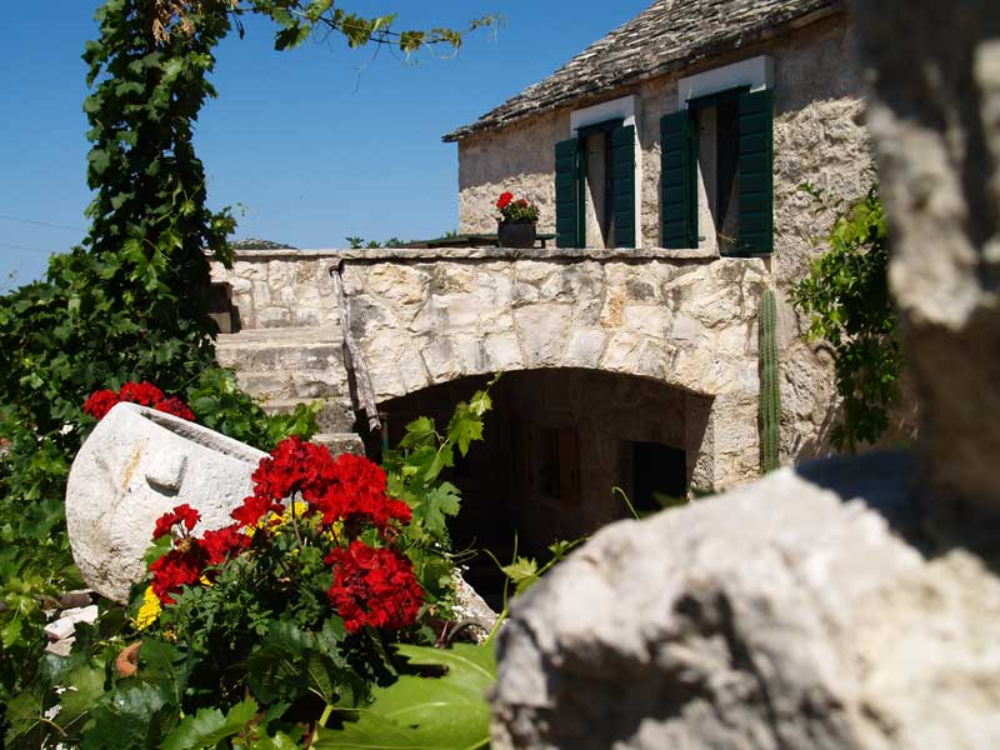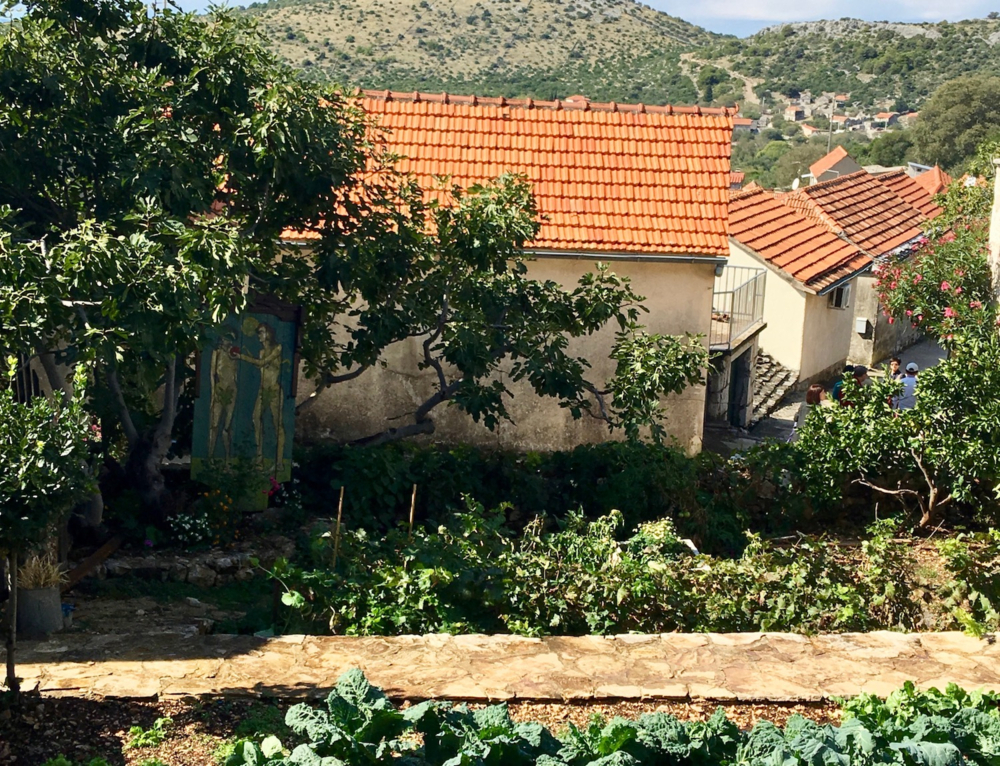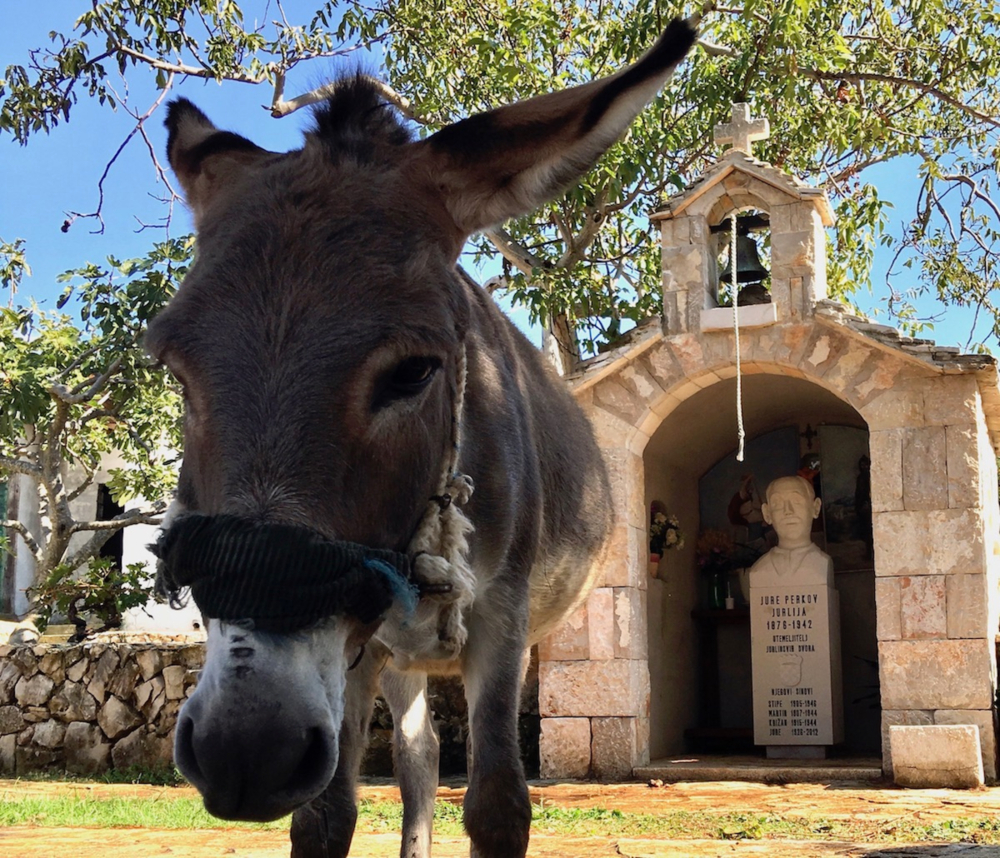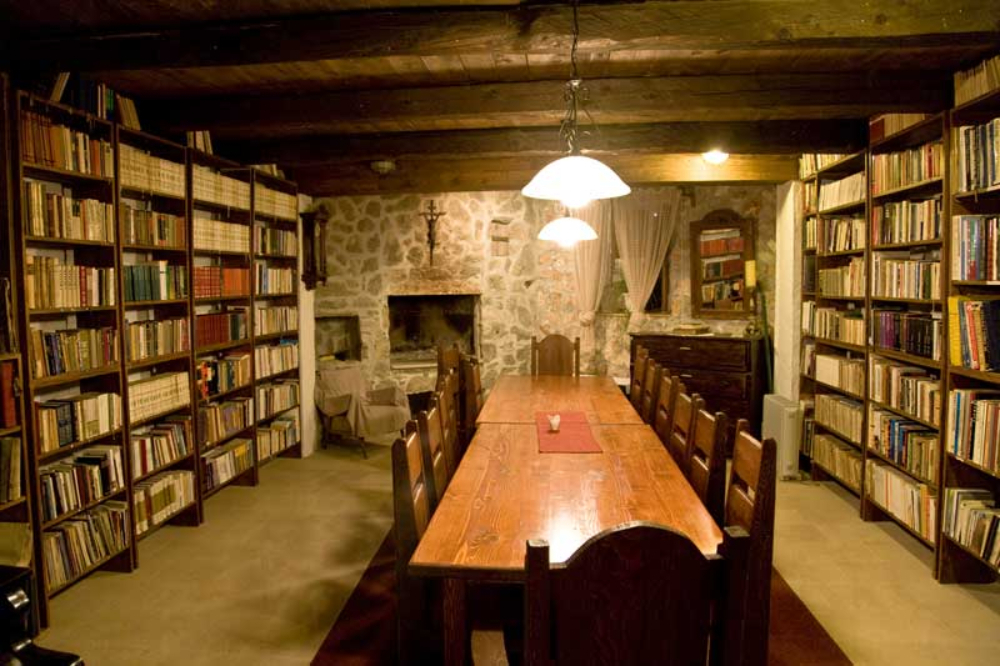
The wheels of our bus had left the 1,000-year-old city of Sibenik and we were on our way to experience traditional Croatian life – and food – at the small village of Jurlinovi dvori up in the Primosten Hills. The bus trip took about half an hour from the coast of Sibenik where there were grapevines and olive groves as far as the eye could see. A sight once seen, never forgotten.
Rain had started to fall when we arrived at the truly charming stone-built settlement in a rural, and rocky, setting, but no one was worried. We were all famished and the promise of authentic Croatian fare was uppermost in everyone’s mind!
Don Stipe Perkov, the enthusiastic priest who has restored the traditional stone settlement of Jurlinovi dvori greeted us.The tiny village has been in his family for many generations and he is now the sole survivor. Don doesn’t speak English, but his welcome was as warm as the room waiting for us to enjoy lunch.
Long medieval-style tables were waiting for us and traditional entertainment by two young village men who expertly played a piano accordion and a guitar instantly created a party atmosphere.

The walls featured many religious icons, including an amazing – and large – handmade lace creation of the Virgin Mary.
Walking into the eating room we were offered delicious, plump, home-grown dried figs closely followed by an appetiser that consisted of homemade bread, a cabbage dish (similar to sauerkraut), platters of prosciutt and slices of soft ‘sheep’ cheese. Our main course was garden potatoes and carrots roasted in olive oil and pork that had a delicious, salty, roasted taste. It was served with a popular Croatian red wine called Babic. Dessert was individual donut-looking concoctions that tasted delicious and very sweet! It was served with walnut schnapps.
The rain had stopped and after the lunchtime merriment, it was time to walk off at least a few calories and explore all that had been created on this small estate.

Healthy crops of vegetables were in every field, including 1,000 Babic vines and a private olive grove. The distant hills had figs and almond trees growing on them, and just about every nook and cranny of the estate had containers full of colourful flowers.

Afternoon entertainment was courtesy of the resident donkey, Janko. His trick was to latch on to the sleeve of anyone walking past and not let go until he was offered compensation. Guests were regularly scuttling around pulling up handfuls of grass to encourage Janko to let go of some poor soul in his grasp! This worked every time. He would then grab at the next passing sleeve, or handbag, of anyone who ventured too close, and wait for his next offering.
Janko was conveniently (for him) tethered right next to one of the main stone paths, meaning he had a ready-made ‘captive’ audience.

Donkeys like Janko are synonymous with the region because they are very surefooted and not afraid of the sun. For centuries they’ve been used to carry heavy products, such as wood, across the rocky terrain.
The estate is a cluster of buildings which were all built in the 16th century with everything created out of local stone. that face the sun, A high wall protects it from the cold bora wind that comes from the north.
Eight terraced buildings were built in a circle that formed a court in the centre – about 200 square-metres. This was used as a kind of family room where they would eat, rest, entertain visitors and everything else that happens in a household.
The 300-year-old historical buildings featured a library that is home to 2,000 books – many exceptionally rare; sacral collection – exhibits spanning 2,000 years; kitchen; distillation room; cellar; bedroom; and a small chapel decorated with stained German glass.

I can certainly imagine spending an entire summer at Jurlinovi dvori picking olives, vegetables and grapes, learning how to make lace and taking leisurely walks into the next village of Draga. All this followed by happy hours sipping away on a glass of Babic, and pulling up bunches of grass for Janko the Donkey so he doesn’t latch on to your clothes.